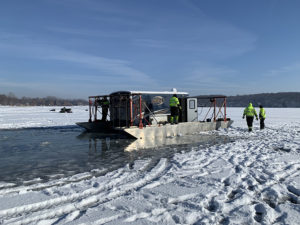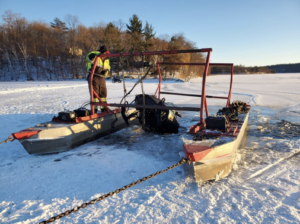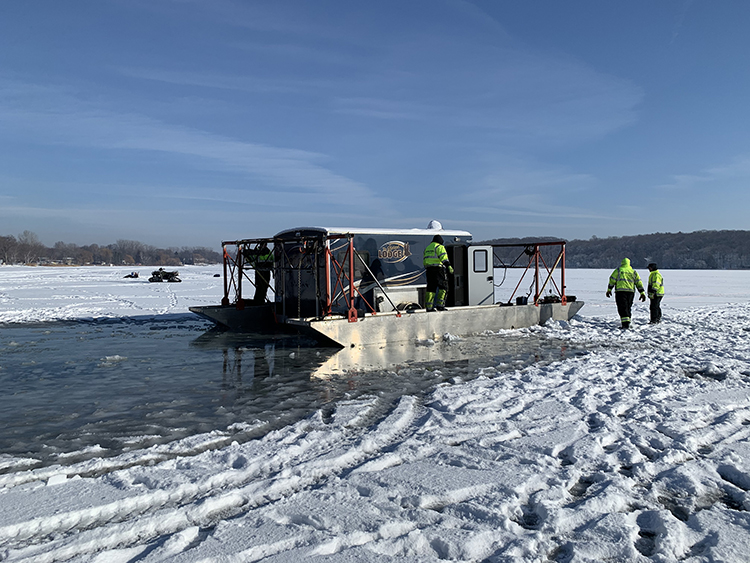by Heidi L. Everett
editor@thenewsleaders.com
For the fourth time in two weeks, Stearns County sheriff deputies have been called to a breakthrough on thin ice.
On Jan. 3, deputies were dispatched to Big Watab Lake in Collegeville Township for a fish house that went through the ice.
When deputies arrived, they found the fish house was being removed from the water. The fish house had gone through a section of thin ice approximately 30-40 yards away from the west shoreline, closest to 30095 Lilac Road. The ice was four to six inches thick in the section it broke through.
According to the sheriff’s report, Michael Stang of St. Joseph said he was pulling his 16-foot fish house with his
UTV, when he felt the fish house fall into the snow behind him, stopping his UTV. Stang looked back and saw the wheels of the fish house were submerged under water. He was able to disconnect the fish house from his UTV prior to it sinking farther into the water.
The report noted the fish house sank about three-fourths of the way into the water with the front tongue portion hanging up on the ice.
This is the fourth occurrence of breaking through thin ice on area lakes in two weeks.
On Dec. 26, the Stearns County Sheriff’s Office received the report of a side-by-side ATV that had fallen through the ice on the north end of Two Rivers Lake in Holding Township.
On Dec. 27, a snowmobile was pulled from the water where it fell through the ice on Little Birch Lake.
On Dec. 31, an ATV broke through ice on Pearl Lake in Maine Prairie Township.
No injuries were reported.
The Minnesota Department of Natural Resources suggests the following ice thickness is generally safe: four inches for walking, five to seven inches for snowmobiles, more than eight inches for cars and more than 12 inches for trucks.
However, the DNR also warns that ice is never 100-percent safe.
Jon Lentz, patrol captain for the Stearns County Sheriff’s Office, said several factors can weaken ice, including waterfowl use, weather fluctuations, snow cover (which acts as an insulator), springs in the lake and water flow under the ice.
“As far as what causes the thin ice area, I believe three of these recent cases were related to waterfowl, geese and ducks, being in the area,” Lentz said. “Their using an open-water area moves the water around enough that it will not freeze until they have gone. Then it takes a while for the thickness to get to a sufficient state to support a variety of traffic.”
Lentz also said when it gets warmer outside that has a negative impact on ice thickness and the creation of more ice.

A fish house owned by Michael Stang, St. Joseph, is pulled from Big Watab Lake Jan. 3 after it broke through thin ice.

On Dec. 27, a snowmobile is pulled from the water where it fell through the ice on Little Birch Lake.



